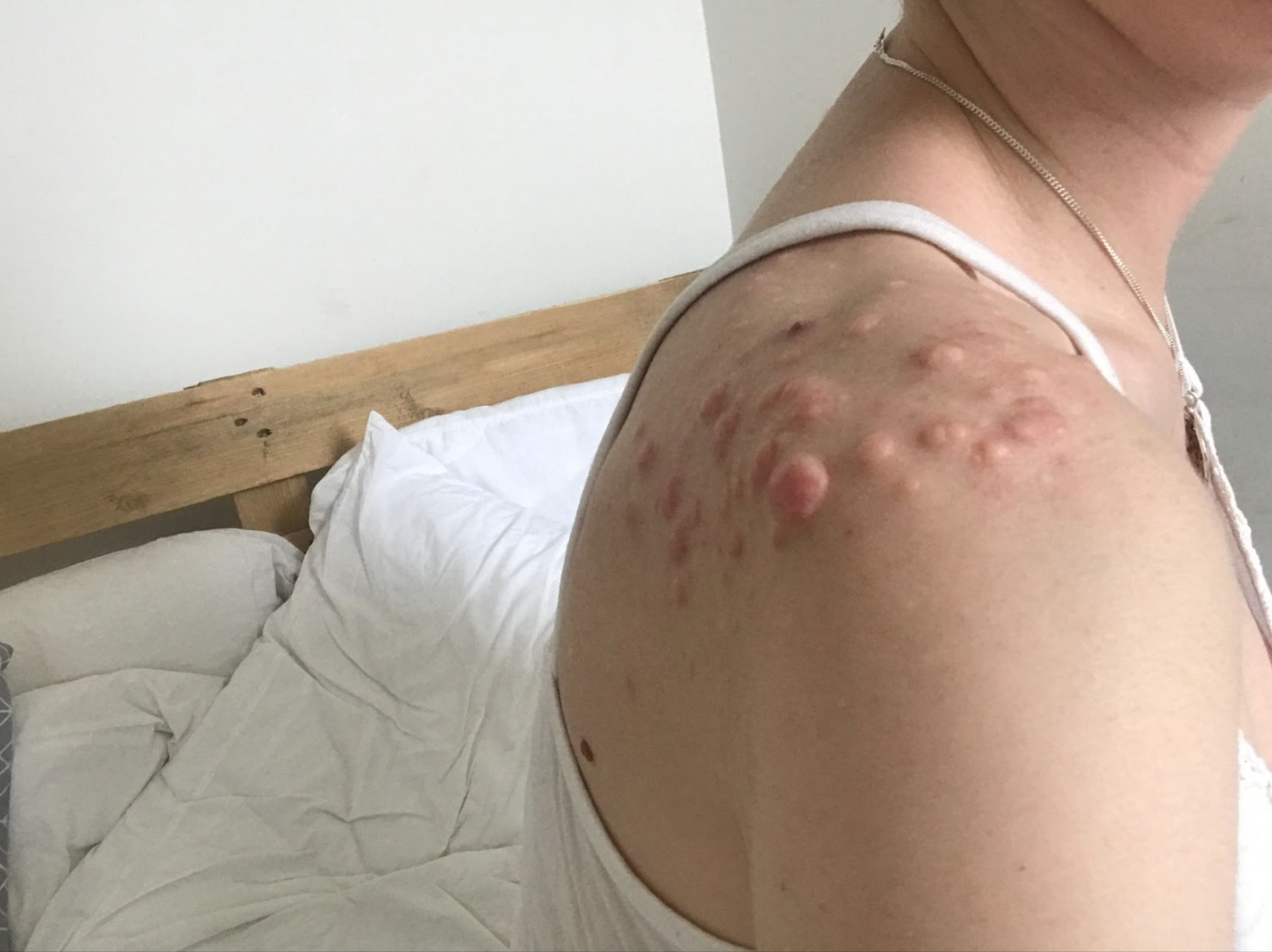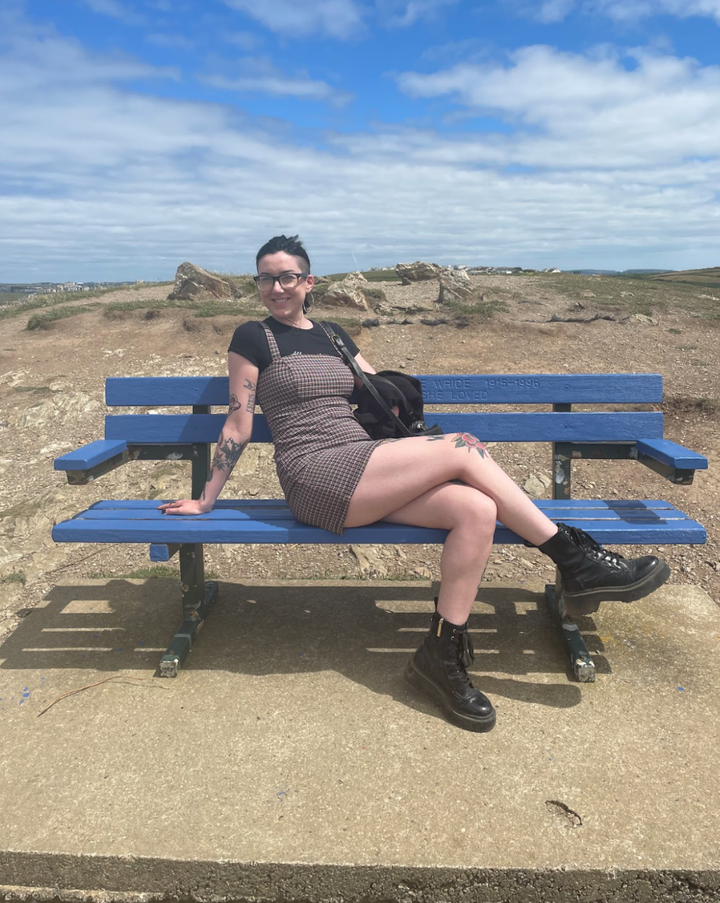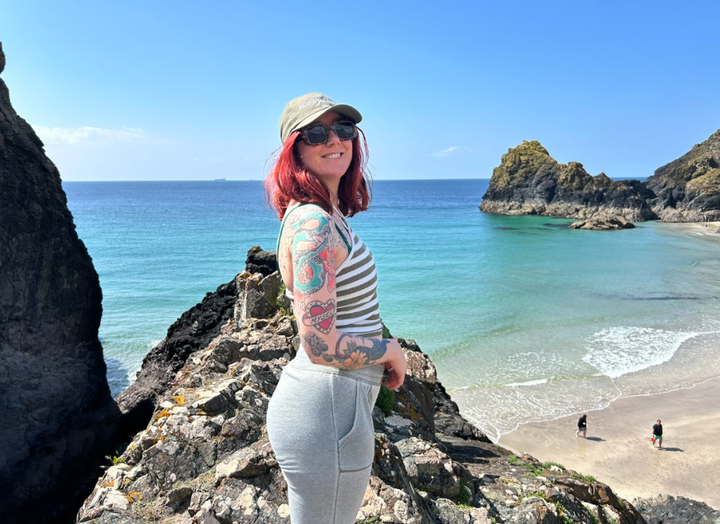I was 19 years old when I noticed a large lump forming in the centre of my chest. My teenage face had always been scattered with pimples, and on my shoulders I had what was referred to at the time as “bacne.” But this felt ― and looked ― different.
At first I thought it was one of those under-the-skin pimples that had led to a diagnosis of cystic acne and prescription of Lymecycline when I was 15, but the red, raised lump on my chest was much firmer and didn’t have a “head.”
Advertisement
The lumps gradually spread across my shoulders and neck, hardening like small red stones on my body. It took me years to admit something was wrong. Instead, I avoided the mirror when I undressed so that I didn’t have to notice the growing number of large, protruding bumps. It wasn’t until they started to become irritated and itchy that I finally visited my doctor, who referred me to a dermatologist immediately.
At the dermatology clinic, the doctor examined me with the kind of squint that suggested my skin was a medical mystery she might enjoy unraveling. “You have a form of keloid scarring that develops from acne called keloid acne vulgaris,” she announced. It sounded to me like a rare disease that people in the 1600s would have been shunned for.
My mind was stuck on one thing: How do I get rid of them? Dr. Haddon explained there wasn’t a “cure,” but steroid injections could help shrink the scars. A few weeks later, however, I received a call from Dr Haddon: “We’re running a dermatology case study open day for unusual cases. It might be a good opportunity for you to get advice from multiple specialists. Would you be interested?”
Advertisement
That’s how I found myself standing in a hospital room, stripped down to a vest top, while a group of dermatologists — clipboards in hand — filed in. Instead of my name, there was a sheet of paper stuck to the outside of the door with “Case Study 6” on it.
One by one, the doctors walked up to peer at my scars and make notes. Occasionally, one would reach out and prod my shoulder like I was some kind of interactive display at a museum. My skin wasn’t just a problem, it was a spectacle. One doctor asked how long the bumps had been there, but for the most part the room was silent other than the sounds of note-taking and shuffling of shoes on the squeaky hospital floor. Nobody asked how I felt about any of this.
The dermatologists moved on to the next patient — No. 7, presumably ― and I walked out feeling more alien in my skin than ever.
Advertisement
Although I began the steroid injections, my scars didn’t seem to fade much. They were sore, and they itched a lot, especially at night. I would wake up to red scratches over my keloids, which made them look even more inflamed.

Photo Courtesy Of Emily Tisshaw
My keloid scars aren’t anything like the regular acne scars I have on my face. Those I can easily hide with a high-coverage foundation and a touch of concealer. These are large lumps that only sleeves and turtlenecks can cover. So that’s what I wore for the next 10 years.
Advertisement
In my 20s, I became an expert in covering up. Winters suited me. In summer, when everyone else was in backless tops, their shoulders golden and glowing, I layered T-shirts under my dresses. Everyone around would be in strappy tops and slip dresses while I was stuck sweating through the armpits of my T-shirts.
The worst thing was seeing friends casually throw their hair up into messy buns, their smooth backs catching the sunlight while I was feeling like an outcast in my layers. I told myself I was making a fashion choice, not deploying a shame-based survival tactic.
I would “warn” partners about my scars before undressing. No one ever outwardly expressed any discomfort with my skin ― I seemed to be alone in that feeling. I even once had a girlfriend who told me she thought my scars were “cool.”
Advertisement

Photo Courtesy Of Emily Tisshaw
Every six weeks, I went back to Dr. Haddon for my steroid injections. It was a routine I despised. The process was painful, the results were minimal, and every visit reminded me that I was permanently stuck in this cycle of trying to “fix” myself. At one appointment, I asked, “How long do I need to keep getting these?” She hesitated before saying, “As long as you feel you need them.” Something about that answer sat differently with me.
Years passed and I continued on in my normal routine of black turtleneck winters and shirt-under-dress summers, until I started sea swimming. I had worn a bathing suit occasionally over the past decade, on holidays abroad and family outings to indoor pools, but I always felt uncomfortable, and it was never something I would’ve chosen to do on my own. But now I was willingly getting into a bikini, because I had realised that I needed to get sober.
Advertisement
In recovery, the ice-cold British ocean became my replacement for the highs I once desperately chased. The shock of the water jolted me awake in a way nothing else could, numbing every thought except the one telling me to keep breathing.
For the first time in years, I stood on a beach, scars exposed, and walked into the sea without thinking about who might be looking. It was terrifying. And then, it wasn’t.
It felt like with every swim, I got more comfortable. The water didn’t care what I looked like. The sea wasn’t judging me.
Advertisement
I spent almost every morning for two years splashing in the cold ocean. I stayed away from drugs. I found a community of other women who liked to sea swim. They called themselves The Blue Tits. Their bodies were all different sizes, some had stretch marks and some were covered in beautiful coloured tattoos. I wasn’t judging their bodies like I judged my own. And after a decade of shame, I could feel something shifting. I was tired of hiding. I realised I didn’t owe anyone “perfect” skin. If I could stand on a beach as the rain fell, and the icy water pelted my skin, I knew I could wear a damn dress without the extra layer.
The truth was, I was exhausted. Exhausted from the constant anxiety over whether someone might notice my scars, or question why I always covered my shoulders. Exhausted from missing out on clothes I loved. Exhausted from feeling like my body was something to be hidden.

Photo Courtesy Of Emily Tisshaw
Advertisement
After years of sharp needles that burnt like a hot rod on my skin, Dr. Haddon agreed that further steroid injections weren’t necessary, and also that the skin could be tattooed on after a few months had passed — something I had wanted to do for a while. I visited an artist who had prior experience covering scars with tattoos. “I once tattooed a guy who was run over by a car!” he told me.
I asked him to do “something big,” and he covered my right shoulder with a large green snake that twisted down my arm intertwined with orange peonies. Snakes are supposed to symbolise new life: the shedding of skin, releasing the weight of the past. But I wasn’t letting go of my old self, I was embracing her for the first time. After years of running, it felt like I had finally come home.

Photo Courtesy Of Emily TIsshaw
Advertisement
I wish I could say that I am now cured of all insecurity, but the truth is, self-acceptance isn’t an overnight transformation. I still have days where I wish my skin told a different story. But I’ve learned to love who I am, scars and all. Today, I’ve swapped the turtlenecks for tank tops. I let the sun touch my shoulders. I let myself be seen.















